But hovering your own drone over your local police chief or favorite legislator’s property is still illegal, right? Because reasons? Of course it is.
Can’t wait for one of these drones to crash and they use that as an excuse to enter the property. May my buckshot fly straight and true.
No way. Old Man Johnson’s Yard rules apply. Your ball lands on my lawn, it’s mine now. Thanks for the batteries and motors, chump.
Better shoot it when it is over your neighbors property. And make sure that you have the same kind of gun.
The real question is probably whether-or-not warrantless drone use and of what type is acceptable under the Fourth Amendment. That’ll be presumably answered by SCOTUS.
This article is from October of 2023, so it’s probably reasonably current in describing the current situation:
https://uclawreview.org/2023/10/25/its-a-bird-its-a-plane-its-a-possible-fourth-amendment-violation/
II. Background
A. Current Guidelines
The Supreme Court’s landmark decision Katz v. US, decided in 1967, established a test to govern whether a state action would be considered a “search” under the Fourth Amendment. The Court utilized the Katz “reasonable expectation of privacy” test by examining both the objective and subjective expectations of privacy held by the person being surveilled. An objective approach requires a court to examine whether an ordinary person would reasonably expect to have privacy in that situation, and a subjective approach concerns whether the individual in question actually did have an expectation of privacy.9 Things that are knowingly exposed to the public are not protected under the Fourth Amendment.10 In Katz, the Court ruled that a listening device attached to a telephone booth by police constituted a search.
Since Katz, surveillance technology has advanced and changed the landscape of Fourth Amendment jurisprudence. The Supreme Court considered the state’s use of new technologies for surveillance in Kyllo v. US. In Kyllo, the Court deemed officer actions to be searches when they used technology not in “general public use” that allowed the state to view intimate details of the home that would be unknowable without physical intrusion. However, the Court did not clearly define “general public use.” The Court ruled that the state’s use of a thermal imaging device in Kyllo was considered a search under the Fourth Amendment because it allowed the police to see intimate details of the home and the Court considered thermal imaging technology to not be in general public use.
The Supreme Court analyzed the use of new aerial technology for surveillance in California v. Ciraolo and Florida v. Riley. In Ciraolo, police used a plane to fly 1,000 feet above Mr. Ciraolo’s home in navigable airspace to confirm a tip that he was growing marijuana plants in the curtilage of his home. The Court considers curtilage to be a constitutionally protected space because it is the area of the yard that is closely associated with the home. The Court ruled that the flyover was not a search and reasoned that Mr. Ciraolo’s backyard was exposed to the public because anyone flying in the public airspace over Mr. Ciraolo’s home could have looked down to see the contents of the backyard.19 Further, the Court noted that the Fourth Amendment does not “require law enforcement officers to shield their eyes when passing by a home on public thoroughfares.”
Three years later, the Supreme Court upheld Ciraolo’s holding in Florida v. Riley. Police in Riley used a helicopter to fly over Mr. Riley’s backyard at 400 feet to peer into a greenhouse in response to a tip that Mr. Riley was growing marijuana inside. The Court, relying on Ciraolo, held that any member of the public could have legally flown over Mr. Riley’s property and peered into his greenhouse. However, the Court clarified that aerial flyovers within navigable airspace may qualify as searches under the Fourth Amendment depending on fact intensive circumstances. Some factors the court might consider in determining whether an aerial surveillance operation constitutes a search are whether: (1) any laws were violated, (2) if flights were substantially rare in the area, or (3) if the surveillance interfered with normal property use by causing undue noise, wind, dust, or threat of injury. The Court also noted that “no intimate details connected with the use of the home or curtilage were observed” during the flyover in Riley, so the flyover was not a search.
B. Drone Capabilities and Uses by Law Enforcement
Over the past decade, police have begun using drones to assist them in a wide variety of functions, including surveillance, search and rescue, scouting raid scenes, making announcements during large public gatherings, and accident and crime scene reconstruction. Police drones can be outfitted with high-tech modifications, such as heat sensors, high resolution cameras, and recording devices. Currently over 1,400 police departments employ drones. Police drone usage can save time and money, increase efficiency, and protect officers. Drone response can also reduce negative encounters with the police by preventing officer deployments for calls that do not implicate criminal activity. Critics of drone usage raise concerns about the threat that advanced surveillance capabilities and data storage of police surveillance drones pose to individual privacy.
Over the first six months of 2023, the NYPD deployed drones 193 times. A majority of these deployments were for training and “public safety, emergency, or other situation with the approval of Chief of Department,” amounting to seventy-three and seventy-eight deployments respectively. Footage shot by NYPD drones is currently stored for thirty days unless there is a legal reason to keep it longer.
Despite the increased use of police drones, the Supreme Court has yet to decide a case involving drone surveillance. Lower courts are currently split on how to decide Fourth Amendment challenges to surveillance drone cases and many state cases are decided based on state and local ordinances instead of on constitutional grounds.
The Federal Aviation Administration (“FAA”) is the only federal agency setting guidelines for drone usage. The FAA’s general guidelines state that drones must fly below 400 feet and be within the visual line of sight of the operator, though the FAA has granted waivers for some public service agencies to fly beyond the visual line of sight. Privacy advocates like the American Civil Liberties Union advocate for local legislatures to pass laws governing the use of drone surveillance and their accumulated data, but many states have not adopted laws governing police departments’ use of surveillance drones. With no clear federal guidelines governing the use of drones for surveillance aside from general FAA guidelines, only state laws regulate police use of surveillance drones.
III. Discussion
Under Supreme Court precedent, drones and modern technologies will require courts to analogize old cases while considering how to enforce the underlying protections of the Fourth Amendment. At the time of this writing, there were 863,728 drones registered in the United States, 506,635 of which were registered for recreational use. While the Supreme Court still has not laid out clear guidelines for determining if technology is in “general public use,” it is likely that the Supreme Court could find that drones meet that standard. Though drones themselves are available to the public, some of the advanced technology attached to drones, such as specialized cameras or recording devices, may not be used enough by the general public to meet that standard.
While drones are becoming increasingly popular, the general population would not expect a drone owner to use a drone as a surveillance method. Members of the general public might tolerate a neighbor’s drone usage, but they would likely take offense if the drone began circling their home in order to get a better view. This type of drone usage would fall outside of expected use and would likely have a chilling effect on personal expression.
Drones are a unique form of aerial surveillance that can be distinguished from Ciraolo and Riley. The aircraft used in both of these cases flew 1,000 feet and 400 feet, respectively, above the suspects’ property.46Under FAA guidelines, drones are required to stay below 400 feet. Drones have the capability to fly even lower and closer to the people and places that they are surveilling. Further, drones are not manned, but often use high resolution cameras that precisely survey the ground and store data for up to thirty days. This is distinct from Ciraolo and Riley, where the pilots could see the marijuana plants with their own eyes.
The Court in Riley held that aerial surveillance could be considered a search under certain circumstances when it interferes with a person’s property use or allows police to observe “intimate details” associated with the home or curtilage. Modern drones are quieter and create less wind than helicopters, so these factors might look different under the Riley approach. Under traditional Fourth Amendments principles, a trespass by state actors would automatically constitute a search. However, the use of drones in low airspace raises the question of how low a drone can fly over someone’s property before it is considered an illegal trespass. The lingering presence of a drone over one’s home is distinct from a plane or helicopter passing far overhead because a drone flies much closer to the property and is more intrusive.
The affordability and availability of drones make them an accessible option in contrast to aerial surveillance, like planes or helicopters. Planes and helicopters require a pilot, a takeoff and landing site, permissible weather, and expensive fuel. Drones are easier to pilot and require less time and financial commitment. A quality drone only costs around $2000, compared to hundreds of thousands for a helicopter or plane. They are also easier and cheaper to store, so they are more readily deployable by police.
So, basically, the very rough standard has been that if what you do can be readily seen by the general public, then it’s not considered private, and police don’t need a warrant to search it. What we don’t know is whether SCOTUS is going to consider that public use of drones basically expands that public space to looking right at your private property at low altitude. We know that in past case law:
-
Stuff visible to people looking out of an airplane has been considered accessible to the public view.
-
Drones are also a lot lower and more maneuverable however, so they can see more.
-
The question is more-or-less whether public use of drones makes people’s backyards visible by drones “public space” and thus accessible to police without a warrant.
-
The specific issue of drones has not yet been addressed by SCOTUS.
-
OK. In unrelated news I have 9 shotguns of various sorts.
I wouldn’t be surprised if they charged you with assaulting an officer for shooting at a police drone.





